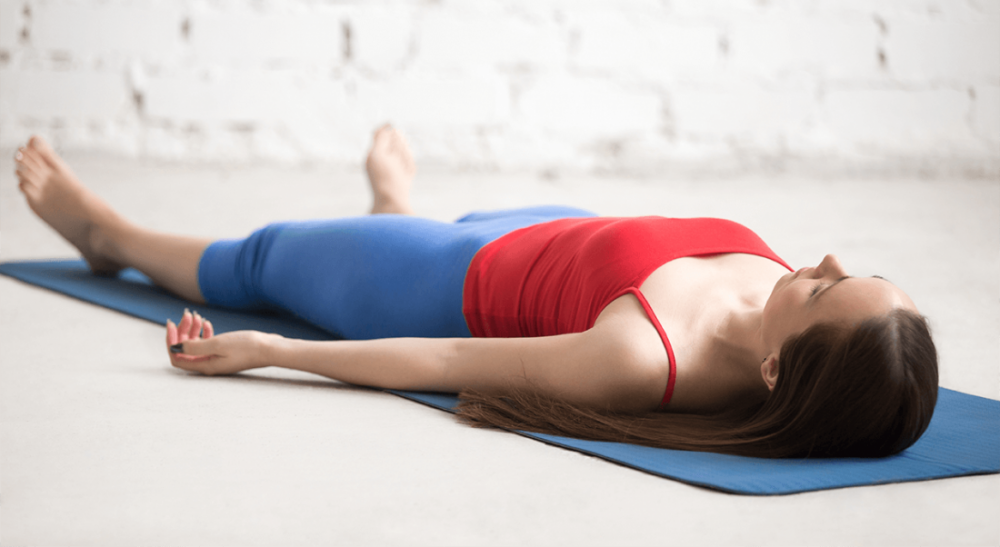Table of Contents
Yoga Nidra Sleep – Yoga Nidra Meditation
The technique of Yoga Nidra Sleep or Yoga Nidra Meditation, also called psychic sleep has been given to the world in a scientific manner by Swami Satyananda Saraswati and is the best way to get relief from physical, mental, and emotional stress. It is an efficient and effective form of psychic and physiological rest. The total systematic and deep relaxation by a Yoga Nidra session is equivalent to hours of ordinary sleep. Through the practice of Yoga Nidra, we are not only relaxing but restructuring and reforming our whole personality from within.
What Is Yoga Nidra
Yoga Nidra, also known as “yogic sleep,” is a guided relaxation and meditation technique that originates from the ancient yogic practices of India. It is a state of conscious deep sleep where the body is completely relaxed, but the mind remains awake and alert. The term “Yoga Nidra” is derived from two Sanskrit words: “Yoga,” meaning union or integration, and “Nidra,” meaning sleep.
In a typical Yoga Nidra session, a trained instructor or a recording will lead participants through a series of relaxation techniques, breath awareness, and guided imagery to progressively relax the body and mind. The practice usually takes around 20 to 45 minutes, although the duration can vary depending on the specific session.
Yoga Nidra Meditation / Sleep Practice
The practice of Yog Nidra generally lasts for twenty to forty minutes. Separate techniques are used for different people depending upon their requirements. As some people need Yog Nidra for treatment while some may need it for spiritual upliftment and even some may need it to change their habits.
Two basic requirements of Yoga Nidra Meditation
- The practitioner should refrain from sleep.
- The practitioner should be fully aware of the instructions given and should follow them mentally without concentrating on them.
Preparation for Yoga Nidra Meditation
- Yoga Nidra is performed while lying in Shavasana.
- Light and loose clothes should be worn.
- Fingertips are kept away floor by turning the palms upwards.
- Sight stimuli are eliminated by closing the eyes.
- The mind is directed to external sounds, moving from one sound to the other with an attitude of a witness. This results in the mind losing interest in the external world and hence becoming quiet.
Resolve In Yoga Nidra Meditation

- I will achieve total health.
- I will be successful in all that I undertake.
- I will awaken my spiritual potential, etc.
Chose only one resolution and do not change it.
Swami Satyananda Saraswati said that anything in life can fail you, but not the resolve made during the Yoga Nidra.
Rotation Of Consciousness
- The rotation of awareness through different parts of the body is not the practice of concentration.
- It requires the practitioner to move his mind rapidly according to the instructions.
- When the instructor takes the name of any part of the body, repeat the name mentally and think of that part, and move on.
- The whole process takes place in the subconscious mind.
- The practice of Yog Nidra is very systematic and the rotation of awareness proceeds in a definite sequence.
Awareness Of Breathing In Yoga Nidra Meditation
- Physical relaxation is taken to a higher level by drawing attention to the breath and being simply aware of it.
- One can observe the breathing either in the chest, nostrils, or navel or even in the passage between the navel and the throat.
- The awareness of the breath promotes relaxation and awakens higher energies which are further directed to every cell of the body.
Feelings And Sensations In Yoga Nidra Meditation
- Feelings that are intensely physical and emotional are awakened, then experienced fully, and then removed.
- Pairs of opposite feelings are practiced such as heat and cold, pain and pleasure, joy and sorrow, love and hate, etc.
- The pair of opposite feelings harmonizes the two hemispheres of the brain and controls functions that are normally unconscious.
- Emotional relaxation is induced along with an increase of willpower at the emotional plane.
Visualization In Yoga Nidra Meditation
- This part of Yoga Nidra induces relaxation at the mental plane.
- The practitioner visualizes the images described by the instructor.
- The images so described by the instructor have a universal significance and powerful association and help to bring the hidden contents of the deep unconscious mind into the conscious mind.
- The mind is purged of disturbing and painful material and is relaxed.
- The visualization practice is finished with an image that evokes a feeling of peace and calmness.
Ending the practice Of Yoga Nidra Meditation
- The unconscious mind becomes receptive to positive suggestions with the visualization practice.
- The practitioner is once again asked to repeat the same resolution that has been made at the beginning of the practice.
- This is like a direct order from the conscious mind to the unconscious mind to radically change the attitude, behavior, and destiny of the practitioner.
- The practice of Yoga Nidra is concluded by gradually bringing the mind back to a waking state as the practitioner is asked to become aware of the physical body, breath, and surroundings.
- Once wide awake, the practitioner is advised to take the left turn and get up by taking the support of both hands and then slowly opening the eyes.
For better effect in Yog Nidra, follow it with either Kandharasana or Naukasana (Dronasana)
For detailed benefits of Yoga Nidra, please read –


7 Comments
I am regular reader, how are you everybody? This paragraph posted at this website is truly nice.
Thanks and your words of appreciation will inspire me to perform better.
This is my first time pay a visit at here and i am genuinely
pleassant to read all at single place.
Thanks a lot for your comments
You actually make it seem so easy with your presentation but I
find this topic to be really something that I think I would never understand.
It seems too complex and extremely broad for me.
I’m looking forward for your next post, I will try to get the hang of it!
Thanks a lot for your comment. Will do my best. Wish you all the best.